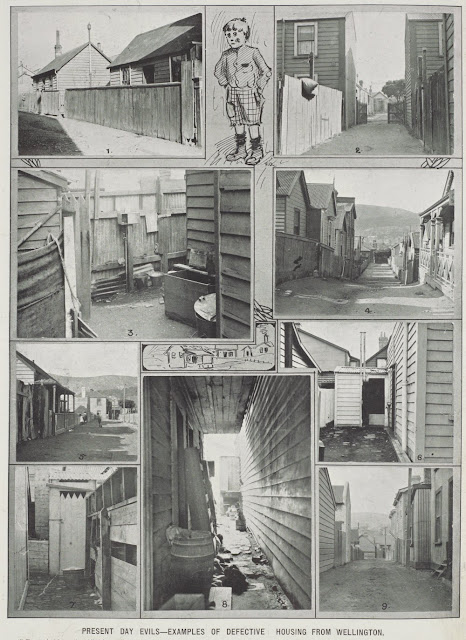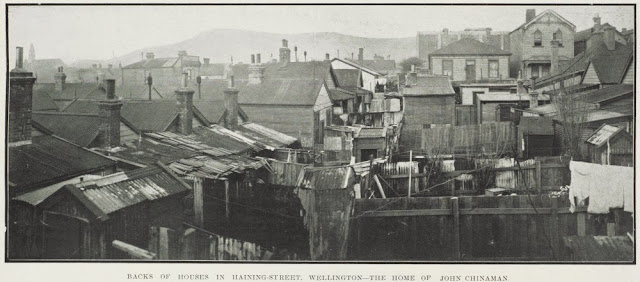What kind of newspaper was the New Zealand Graphic and Ladies Journal?
In May 1890 Auckland newspaper proprietor and publisher Henry Brett released a new illustrated magazine with the lengthy moniker New Zealand Graphic, Ladies Journal and Youths Companion [sic]. His new journal would be a ’lifestyle magazine’ targeted at the affluent, leisured ladies (plus discerning husbands and literate children) of New Zealand’s middle and upper classes. Brett’s vision for his new production was that it should be a high-class illustrated weekly competing with imported English illustrated journals like the Gentlewoman, Cassell’s Family Magazine and the Spectator.
Consequently, the first issue of the New Zealand Graphic included serialised chapters from New Zealand author J.C. Firth’s recent book Nation Making: a story of New Zealand Savageism and Civilization, together with handsomely illustrated chapters from English novelist Wilkie Collins’s last novel, Blind Love. These stories featured alongside pages of social gossip, poetry, news and pictures of the latest in ladies’ fashions from Paris and London.
 |
| Image: London and Paris fashions. The latest novelties in furs. 9 July 1892. Auckland Libraries Heritage Collections, NZG-18920709-698-1. |
This eclectic combination of subject matter was successful with Brett’s targeted audience and would become the general content formula for subsequent issues. Accordingly, future editions of the New Zealand Graphic included syndicated novel chapters by British authors like W.E. Norris, Rudyard Kipling and C.B. Burgin, but also stories like ‘Love on a [sic] Auckland Omnibus,’ ‘How to Get Married,’ ‘Between H and N: a Christmas fragment’ and other New Zealand tales by Auckland writer, Lizzie Frost Rattray.
 |
| Image: Mrs William Rattray (Lizzie Frost Rattray). 23 July 1892. Auckland Libraries Heritage Collections, NZG-18920723-735-1. |
Lizzie Frost Rattray’s literary skills soon made a favourable impression on Henry Brett, who had surprisingly progressive views on the employment of women for a man of his time. Since about 1875 he had employed women as typesetters and compositors on his paper, the Evening Star (Auckland Star), and in 1891 he took the further enlightened step of offering Lizzie the position of Lady Editor assisting with the women’s, children’s and society sections of the New Zealand Graphic.
In her new role, Lizzie Frost Rattray was able to use her position to influence the lives of women. As Lady Editor, she would have been expected to preside over the usual pages on fashion notes, social deportment and etiquette, balls …
… garden parties …
 |
| Image: A view of ‘Waitaramoa’ Mr [Edwin] Mitchelson’s Remuera residence. 24 December 1904. Auckland Libraries Heritage Collections, NZG-19041224-28-1. |
… society weddings …
 |
| Image: Moss/Moss-Davis wedding guests. 13 January 1900. Auckland Libraries Heritage Collections, NZG-19000113-69-2. |
… and the society hostess’s perpetual problems getting the right kind of servants …
However, in the liberal editorial environment Brett encouraged at the Graphic, Lizzie also wrote articles about women’s suffrage, temperance and other issues of concern to women:
 |
| Image: Ashley Hunter cartoon. ‘Disguise our bondage as we will, 'tis woman, woman rules us still.’ 30 September 1893. Auckland Libraries Heritage Collections, NZG-18930930-249-1. |
She wrote about women’s employment opportunities, but also about the working conditions they often endured, as can be seen in the picture of Sargood, Son & Ewen’s boot factory below:
 |
| Image: Machinery room. 31 January 1891. Auckland Libraries Heritage Collections, NZG-18910131-9-1. |
Brett allowed Lizzie and his other senior editorial staff to introduce new social ideas to his middle-class readers; people who had the time, affluence and influence to lobby for social change, should they choose to do so. His editorial policy also meant the New Zealand Graphic kept abreast with current international journalistic trends. During the early twentieth century, American investigative journalists including Lincoln Steffens, Florence Kelley and Jacob Riis gained prominence (if not notoriety) exposing a range of urban problems in United States cities. New investigative journalism styles and practices had already reached New Zealand. Here in Auckland, journalist Hilda Keane went undercover in 1904 to investigate ‘the Domestic Service Problem’ and servant exploitation in wealthy Remuera households.
In earlier undercover work, Hilda Keane had already exposed poor living conditions in inner-city slums in a series of articles published by the New Zealand Herald in August 1903. But despite gradual council improvements, lax bylaws and town planning regulations still led to lingering public health problems in insanitary parts of Auckland and Wellington. Then on 19 July 1911 the New Zealand Graphic informed its shocked Auckland readers that blocks of substandard working-class houses still festered not far from Queen Street in Federal, Elliott and Cook streets, at the western ends of Victoria and Wellesley streets and around Alexandra Street in the upper city.
The Graphic’s sequence of slum photos in that issue was captioned ‘Homes of the working class – some choice specimens from Auckland;’ perhaps allowing readers to choose between responding with the elitist judgementalism of a society hostess or the well-meaning busybody’s paternalistic desire to help the poor workers. But in the opinion of the Graphic, these rat-infested Auckland hovels were only fit for demolition:
English journalist and town planning advocate Charles C. Reade first showed these slum photos during his Auckland ‘lantern lecture’ on ’The slums of Auckland and Wellington’ on 14 July 1911, when he told concerned citizens there were more choice specimens of ‘homes of the working class’ in the southern city. Reade’s photos were re-published by the Graphic, at least mollifying Auckland socialites that there were substandard workers’ houses in the capital too. Wellington’s slums slumbered foully in Te Aro around Tory Street…
 |
| Image: Present day evils: examples of defective housing from Wellington. 09 August 1911. Auckland Libraries Heritage Collections, NZG-19110809-22-1. |
… and in the Chinese enclave in Haining Street (where the Graphic’s caption sub-editor could not resist some anti-Chinese racism.)
 |
| Image: Backs of houses in Haining Street – the home of John Chinaman. 19 July 1911. Auckland Libraries Heritage Collections, NZG-19110719-21-3. |
Therefore, to sum up, the New Zealand Graphic was essentially a journal focussing on the urban concerns and perspectives of city readers. But apart from focussing on urban issues like slums and squalor, from time to time the Graphic cast a critical eye (from an urban perspective) on what was happening to the New Zealand countryside as the result of the colony’s pursuit of progress. The next photograph, published on 6 May 1893, shows ‘the work of destruction in a Kauri Forest.’ Here a jumble of kauri logs already felled by bushmen lies waiting to be dragged by bullock team to the bush tramway which leads to the sawmill:
 |
| Image: Martin. Our timber trade: the work of destruction in a Kauri Forest, Auckland. 6 May 1893. Heritage Collections, NZG-18930506-409-1. |
Deforestation also occurred as railways were built so farmers could access urban markets. The two following photographs taken during construction of the Ongarue/Stratford Railway show ‘How deforestation follows the railway’ (or actually just precedes it.) The photographs show ‘Two sides of the tunnel.’ The upper photograph shows forest cleared for the railway where the line from Stratford goes through a tunnel in the Pohukura Saddle. The deforestation along the rail route is contrasted with the lower photograph of land two miles further on beyond the tunnel to Pohukura, on the line’s planned route through as-yet untouched forest:
 |
| Image: How deforestation follows the railway. 21 September 1910. Auckland Libraries Heritage Collections, NZG-19100921-18-1. |
The price of wholesale deforestation was flooding and erosion. Wherever forests were cleared no plant cover remained with roots to bind soil or to absorb water. On 8 June 1910 the Graphic published this aerial panorama of flooding at Te Aroha. This happened because floodplains around the Ohinemuri and Waihou rivers had been cleared of forest when the land was turned into farm paddocks. With no vegetation cover to absorb overflowing river water, the flood spread out over the floodplain as we see in the photograph:
 |
| Image: The results of deforestation. 8 June 1910. Auckland Libraries Heritage Collections, NZG-19100608-26-2. |
Environmental concerns about the way extractive industries and early twentieth century agricultural techniques were destroying New Zealand’s natural environment further underline the point that the New Zealand Graphic was a journal reflecting the perspectives of affluent but ‘socially-aware’ urban readers. But these concerns also highlight the urban/rural divide and the difficult New Zealand conundrum about how to have progress and prosperity while still conserving the natural rural environment.
Affluent urban consumers demanded the meat, vegetables and dairy products produced on distant farms, which needed railways to reach Auckland and Wellington markets. Likewise, urban demand for expensive houses, furniture, and conspicuous quality items such as craftsman-built pleasure boats was a real reason for the demise of many kauri forests. Even if rural people like sawmillers, farmers, surveyors (and railwaymen) could resist the temptation of accusing ‘townies’ of selective hypocrisy, they would probably have been justified in maintaining that town dwellers did not really understand the dynamics of rural New Zealand. That urban double-standard is also part of the context of the New Zealand Graphic.
Apart from a few damaged or missing issues, Auckland Libraries holds a fairly complete set of both paper and microfilmed versions of the New Zealand Graphic and Ladies Journal from its beginning in May 1890 until its amalgamation with the Auckland Weekly News in June 1913. Most photos from the photographic supplements have been digitised but this depended on the condition of the pages. Auckland Libraries has also supplied almost 35,000 Graphic photos which are available on Digital NZ. The Graphic is also lined up to appear on Papers Past in the next couple of years which will enable readers to research the entire digitised text of the magazine, in addition to the images.
Author: Christopher Paxton, Heritage Collections
Further reading
Auckland Star https://paperspast.natlib.govt.nz/newspapers/auckland-star
Michael Brett. 'Brett, Henry', Dictionary of New Zealand Biography, first published in 1993. Te Ara - the Encyclopedia of New Zealand, https://teara.govt.nz/en/biographies/2b39/brett-henry (accessed 14 January 2022)
Theresa B. Graham. 'Rattray, Lizzie Frost', Dictionary of New Zealand Biography, first published in 1993. Te Ara - the Encyclopedia of New Zealand, https://teara.govt.nz/en/biographies/2r4/rattray-lizzie-frost (accessed 14 January 2022)
Ian F. Grant. Lasting Impressions: the story of New Zealand’s newspapers. 2018.
James Hollings. A Moral Truth: 150 years of Investigative Journalism in New Zealand. 2017.
Janet McCallum. 'Rollett, Hilda', Dictionary of New Zealand Biography, first published in 1996. Te Ara - the Encyclopedia of New Zealand, https://teara.govt.nz/en/biographies/3r26/rollett-hilda (accessed 14 January 2022). Hilda Rollett was Hilda Keane’s married name.




Comments
Post a Comment
Kia ora! Please leave your comment below.